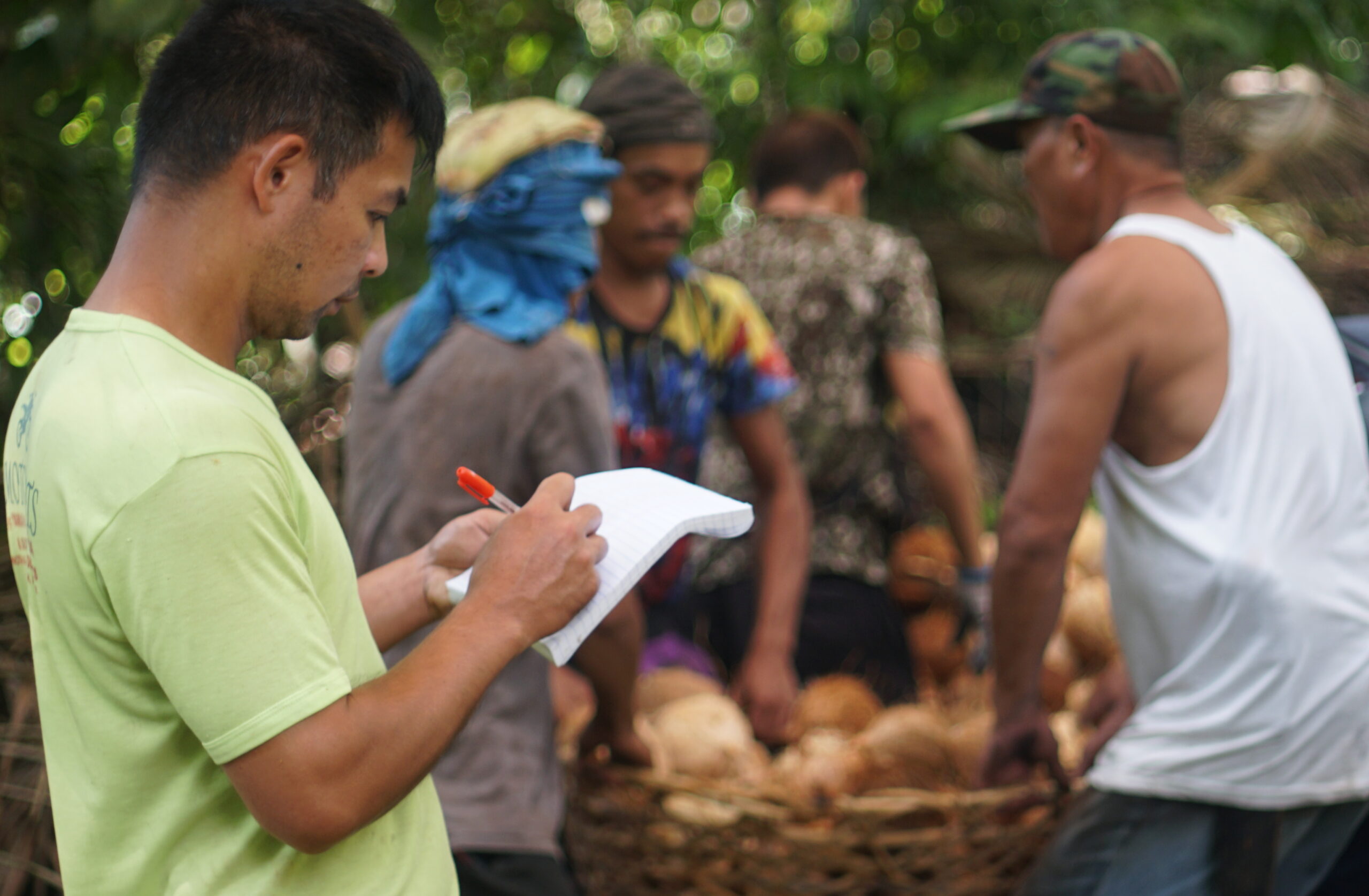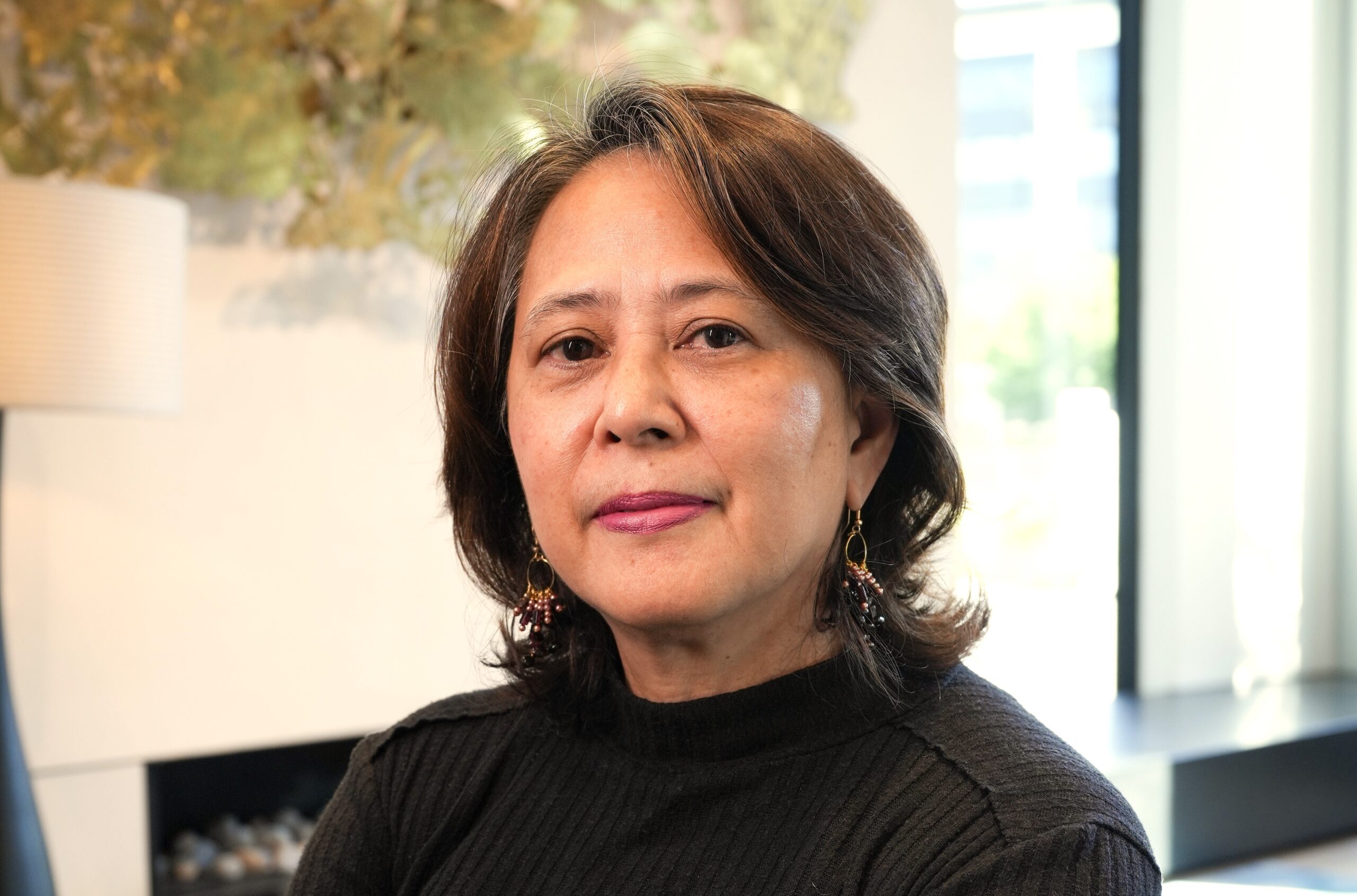This week, sustainability issues and prospects in the coconut sector gain the spotlight as the annual Sustainable Coconut Partnership (SCP) roundtable takes place in Manila. DIWA’s Melissa Villanueva sat down with Daryll Delgado, one of DIWA’s Senior Program Directors, to revisit past and ongoing programs in coconut as well as insights gained from her work in other raw commodity sectors. In this conversation, we highlight some pitfalls and possibilities for coconut. As demand for sustainable and ethical coconut production continues to increase, insights from across agricultural supply chains merit a closer look.
Melissa Villanueva: Thank you, Daryll, for taking the time to discuss such a timely topic today: sustainability and labor rights in the coconut sector. As important industry actors gather in Manila for the annual coconut roundtable, what about labor rights in the coconut sector? What would you want key industry actors to consider or understand better?
Daryll Delgado: Good morning, Melissa. We are not able to attend this year’s SCP Roundtable, unfortunately, but I think quite a lot of progress has been made in the last few years in forums like this to really understand the supply chain and identify key challenges. Where I think there can still be more engagement is specifically on the issue of labor conditions and understanding the different categories of workers and their specific vulnerabilities. It is well known that the coconut sector is predominantly smallholder. Working with farm owners to improve productivity and hopefully incomes has been a focus of many initiatives, which is very helpful. But many farmers also employ paid workers, albeit informally, alongside their family members, children and minors, especially during the harvest and field processing. Based on data from the Philippines, and our own research, there are thousands of farms managed by sharecroppers. This workforce is critical to understand, too.
MV: Based on my initial involvement in the research phase of the FBK project, I understand that DIWA’s focus and approach to understanding the coconut sector varies quite a bit from how we do it in other sectors. What is the reason for that, what distinguishes this sector from other sectors in which DIWA works?
DD: As a Philippine-based organization, DIWA has been aware of labor issues in coconut for many years. There are also many active grassroots organizations that have been doing very good work in the sector for a long time, uplifting the livelihoods and living conditions of farmers, advocating for better policies and government support, organizing the farmers into cooperatives. But there has not been a lot of attention on the work or labor aspects of the sector. Even before our research and engagement in coconut formally began with the multi-stakeholder initiative in 2021, a Child Protection-focused project funded by the FBK, a Dutch government initiative, we have had involvements in assessing the effectiveness of micro-financing loans for coconut farmers, and we have always looked at the impacts of policies and programs on labor conditions as they intersect with other issues, including community-level impacts. Oftentimes we approach our work looking at supply chains and supply chain actors. In coconut, we started much broader, looking at community-level impacts. We’ve now done a number of engagements in the sector. Research has been key because there was not very much documented, even five years ago, regarding labor conditions and practices in the supply chain.
MV:The coconut sector shares similarities with other commodity agricultural crops grown by smallholders, such as cacao, coffee, and to some extent, palm oil, right?
DD: That’s right, however, a key difference is that, unlike the palm oil sector which has a code of conduct through the RSPO, the coconut sector does not yet have very detailed industry requirements, particularly for labor and human rights. In coffee and cacao, there have been decades of development towards voluntary certification schemes, fair trade, traceability. I would say visibility is a significant challenge still in coconut– some processor companies have clear human rights commitments, but are severely challenged in cascading these to the production segment of the chain, the farmers and farm workers. And stakeholders are just beginning to come together to align on priority issues.
MV: What are some of these priority issues or most salient risks in the sector, and what kinds of programs has DIWA been pursuing to address them?
DD: Child labor is a priority issue. The U.S. Department of Labor, for example, lists Philippine coconut as produced by child labor. Other critical issues are related to health and safety as well ensuring at least the minimum wage for workers.
Following the FBK research phase, we have continued as a consortium to implement a program of work focused on preventing and addressing child labor in several pilot areas. Our role has been engaging directly with suppliers and first-tier traders, to align on the definition of child labor as well as establish management systems to prevent and detect risks. There’s also a pilot Child Labor Monitoring System at the community level and efforts to increase farmer income included in that project. These initiatives, while still a small fraction of the market, show potential for improving practices and highlighting the standard- no child labor- across the sector.
We’ve been engaged to conduct several human rights impact assessments in both the Philippines and Indonesia. And we have upcoming engagements as well, that will work at the ground-level to establish workable standards and due diligence mechanisms.
MV: What, if any, are the wins or improvements that DIWA has seen, and what are the aspects that remain critical or challenging, from a labor rights perspective?
DD: I can start with the challenges. I’ve already mentioned that visibility for customers and processors is an issue, this is primarily related to the way in which the supply chain is set-up, with trader intermediation and traditional processing, and unorganized smallholder farmers as a key feature. There is also a lot of informality across the sector, with many transactions built on long-standing and traditional, but unchecked and unregulated relationships. The most dominant are also the most vulnerable groups in the supply chain, for example sharecroppers, and those farms in far-flung areas… These farms and communities are exposed to the highest risk and but are also the least visible and accessible to otherwise good sustainability programs. In the Philippines, there are an estimated 350,000+ sharecroppers in the sector who may earn only a third of the income from their farm, and based on our research, many remain responsible for production costs. This drives farmers to bring in minors and children to work, rather than hiring and paying for adult workers. The debt relationship with traders also creates risks of debt bondage, a forced labor risk indicator. We also see significant health and safety hazards, including common ones like risks of falling from tall trees, injuries from use of sharp tools, and exposure to a host of safety hazards during copra baking. Wages and incomes are a major concern, as these often fall below the agricultural minimum wage. There are more, and we recognize that these are challenges with no easy solution.
MV: It seems there’s a mix of economic and social factors at play. In terms of improvements, would you agree that it is still very early to see the results of programs we have been involved in, for example with child labor?
DD: Yes, it is too early to see results, especially when we are talking about intergenerationational poverty. It is a complex issue, particularly for vulnerable groups as I mentioned. That being said, we have seen cases here in the Philippines, for example, wherein workers are more empowered and organized and are employed in decent work arrangements, supporting multiple farms. In those contexts, where of-age workers are able to earn more for the family, child labor risks are lower. Efforts in formalizing protections for various types of work arrangements, and making sure that these are considered by existing human rights-related policies and procedures are still lacking. But I think in the next few years we will see multistakeholder approaches are crucial to recognizing and giving voice to the many workers who, as we say, fall outside the frame of otherwise well-intentioned sustainability efforts.
MV: It sounds like you are still optimistic despite the systemic nature of issues in the sector. Thank you, Daryll, for this insightful overview. It’s clear that while significant challenges remain, there are concerted efforts to bring about positive change in the Philippine coconut sector. Thanks again for making time to speak with me.
DD: There are now more people, more organizations, talking about the labor issues that are unique to coconut production, but we still have a long way to go until the coconut industry has adequate due diligence systems and appropriate sustainable business models in place. We know these things take time, and these kinds of issues cannot be solved by one consortium, one stakeholder, one company, or by the government alone. But we have seen how continued collaboration and focused interventions have made a difference in other sectors, and we can perhaps leverage lessons from those other sectors here.
To learn more about our agricultural programs, please see the Research and Innovation page on our website. You may also reach to Daryll Delgado [email protected] directly to discuss customizing a program in coconut for companies and business partners.


